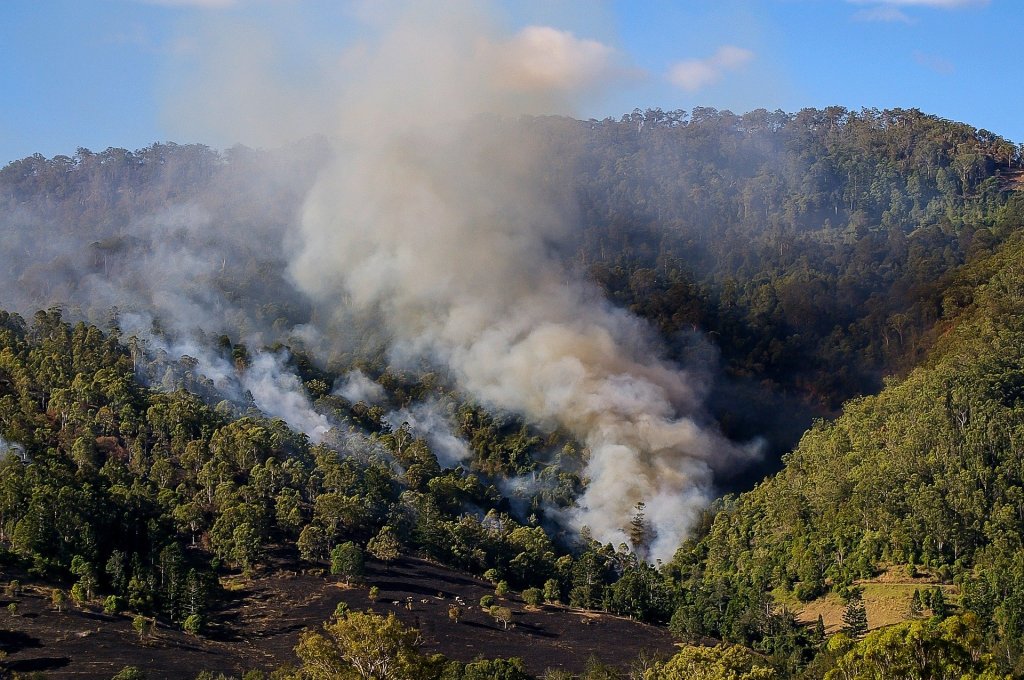By Alice Sleightholme, Second Year Geography

Australia is currently fighting its worst bushfire season to date, which is set to continue well into 2020, accompanied by increasingly severe droughts and new high temperature records.
Across the southeast of Australia, supermarkets are empty, flights have been grounded, villages have been abandoned, and with firefighters overwhelmed, Australia is still bracing for the worst.
While Australia may be synonymous with wildfires and regular fire seasons, this bout of bushfires has been unlike any other. People are being evacuated all over the country, but the flames are disastrous for wildlife in affected areas, with an animal death toll currently standing at 500 million in New South Wales alone. Even if the animals are not killed by the fires directly, their habitats are still destroyed.
With this crisis worsening, there has, of course, been increasing speculation around what or who is to blame for the disaster. After reading many articles and reports, fingers have been pointed at ISIS and other terrorist organisations as well as God and brute teenagers.
However, we must face the facts. When Australia is facing its worst ever fire season, the blame lies at the feet of the biggest fossil fuel companies, which contribute directly to 70% of all global greenhouse gas emissions. It is crucial that we combat them, in the fight to save our planet.
Undeniably, the current positive phase Indian Ocean Dipole has to be considered as a cause of these wildfires. This air circulation pattern over the Indian Ocean causes the water to cool to below average temperature off the Sumatran coast, in turn causing reduced atmospheric lift and therein reduced rainfall over Australia. This consequently aids the instigation of new blazes in areas usually unsusceptible to bushfires.
However, this natural factor aside, the record temperatures like 43.6˚C in Canberra where temperatures usually average 29˚C in January, links inherently to anthropogenic climate change. By speeding up the drying of the landscape, added to the increased severity of extreme heat events, one of the most widely accepted conclusions among climate scientists is that anthropogenic climate change increases the frequency and magnitude of heat waves. And here we are, watching Australia burn like never before. The changing climate is key to understanding the ferocity of this blaze.
Sadly, the bushfires are predicted to continue burning for weeks and months into 2020. Australia will eventually enter its dry season in a state of precarious desiccation. The current scale of the ongoing disaster in Australia is difficult to comprehend. With twelve million acres in Victoria and New South Wales lost already, the wildfires are predicted to devastate over 60 million acres, destroying agriculture, biodiversity, and communities.
Despair aside, there is still so much that we can do. A number of organisations are assisting firefighters and recovery efforts for affected communities in Australia. If you cannot donate, sharing the story on social media and raising awareness is just as important and necessary.
You can donate to the Australian Red Cross Disaster relief and recovery fund that is supporting evacuation centres and recovery programs for affected communities. The New South Wales Rural Fire Service has a donation page to support firefighting efforts in New South Wales and the RSPCA bushfire appeal is used to evacuate the pets, livestock and wildlife affected by bushfires.
But remember, there is always hope. By sharing Australia’s story and protesting against fossil fuel corporations contributing to these disasters, you are standing up for the planet and everyone around you.

Thank you Alice for taking time to write up this article very informative. Best wishes Pat Francis. SCR member
Sent from my iPhone
>
LikeLike
Thank you Alice for making the time to write this article. I enjoyed reading it and found it informative and I will try to remember some of the facts to pass on to others. Good wishes from Pat Francis. SCR member
LikeLike